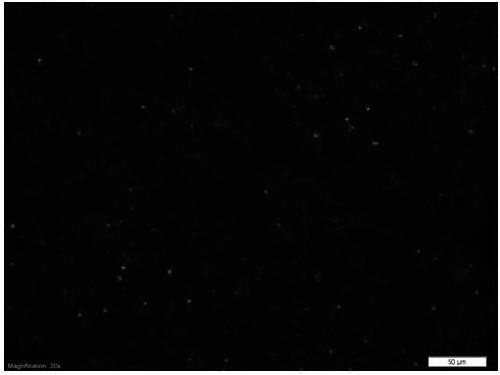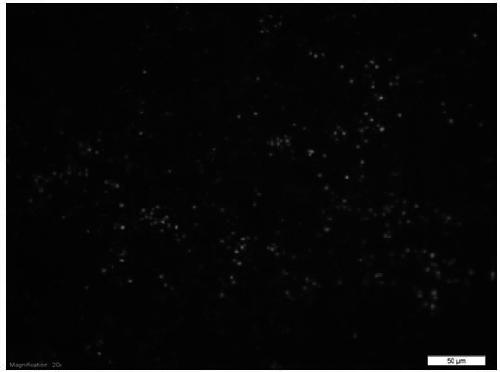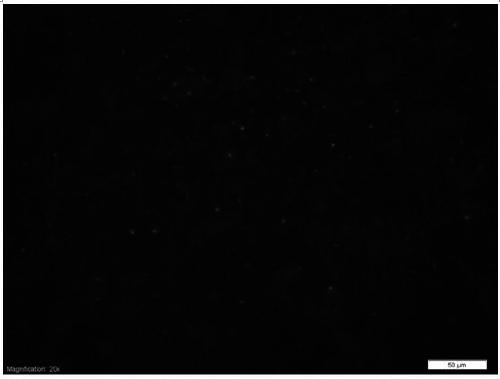A stachydrine derivative, its preparation method and its application in the preparation of medicines for treating cardiovascular and cerebrovascular diseases
A technology for cardiovascular and cerebrovascular diseases and derivatives, applied in the field of medicine, can solve problems such as limited research and development, undiscovered cardiovascular and cerebrovascular drugs, and high toxicity of stachydrine hydrochloride, and achieve the effect of inhibiting cytotoxicity
- Summary
- Abstract
- Description
- Claims
- Application Information
AI Technical Summary
Problems solved by technology
Method used
Image
Examples
Embodiment 1
[0046] Example 1: The synthetic route of N-methyl-L-proline b is as follows:
[0047]
[0048] Dissolve L-proline (4.0g, 34.8mmol) in methanol (40mL), add 40% aqueous formaldehyde solution (2.8mL, 38.2mmol) and 10% palladium on carbon (1g) in turn, add hydrogen, and at room temperature After the reaction was completed for 24 hours, it was filtered, and the mother liquor was concentrated and dried to obtain 4 g of white solid with a yield of 89%, which is N-methyl-L-proline (compound b). ESI-MS: (m / z, %)=130[M+H] + .
Embodiment 2
[0049] Example 2: The synthetic route of (S)-2-(1-methylpyrrole-2-carboxamide)-benzoic acid (compound B-1) is as follows:
[0050]
[0051] The N-methyl-L-proline b (1.29g, 10mmol) prepared in Example 1 was added to dichloromethane (20mL), and dicyclohexylcarbodiimide DCC (2.47g, 12mmol) was added in sequence It was reacted with anthranilic acid (1.37g, 10mmol) at room temperature for 24 hours, and the white solid was filtered off. The mother liquor was concentrated and dried to obtain 1.6g of white solid with a yield of 61%, which is compound B-1.
[0052] 1 H NMR (500MHz, CD 3 OD)δ=8.45(d,J=8.3Hz,1H), 8.10(dd,J=7.9,1.3Hz,1H), 7.61-7.53(m,1H), 7.22(t,J=7.6Hz,1H) ,4.43(t,J=8.4Hz,1H),3.82-3.72(m,1H),3.36-3.22(m,1H),3.02(s,3H),2.77-2.67(m,1H),2.25(ddd , J = 18.2, 9.2, 3.9 Hz, 2H), 2.17-2.06 (m, 1H).
Embodiment 3
[0053] Example 3: The synthetic route of (S)-N-(4-amino-4-oxobutyl)-1-methylpyrrole-2-carboxamide (compound B-2) is as follows:
[0054]
[0055] The N-methyl-L-proline b (1.29g, 10mmol) was added to dichloromethane (20mL), and DCC (2.47g, 12mmol) and γ-aminobutanamide (1.02g, 10mmol) were added successively, Reacted at room temperature for 24 hours, filtered, and the mother liquor was concentrated to dryness to obtain 1.6 g of white solid with a yield of 75.1%, which was compound B-2.
[0056] 1 H NMR (500MHz, CD 3 OD)δ=3.94(t,J=7.9Hz,1H),3.71-3.59(m,1H), 3.28(d,J=7.1Hz,2H), 3.13(dt,J=20.8,10.5Hz,1H) , 2.88(s, 3H), 2.59-2.46(m, 1H), 2.29-2.22(m, 2H), 2.22-2.10(m, 1H), 2.08-1.97(m, 2H), 1.88-1.77(m, 2H).
PUM
 Login to View More
Login to View More Abstract
Description
Claims
Application Information
 Login to View More
Login to View More - R&D
- Intellectual Property
- Life Sciences
- Materials
- Tech Scout
- Unparalleled Data Quality
- Higher Quality Content
- 60% Fewer Hallucinations
Browse by: Latest US Patents, China's latest patents, Technical Efficacy Thesaurus, Application Domain, Technology Topic, Popular Technical Reports.
© 2025 PatSnap. All rights reserved.Legal|Privacy policy|Modern Slavery Act Transparency Statement|Sitemap|About US| Contact US: help@patsnap.com



